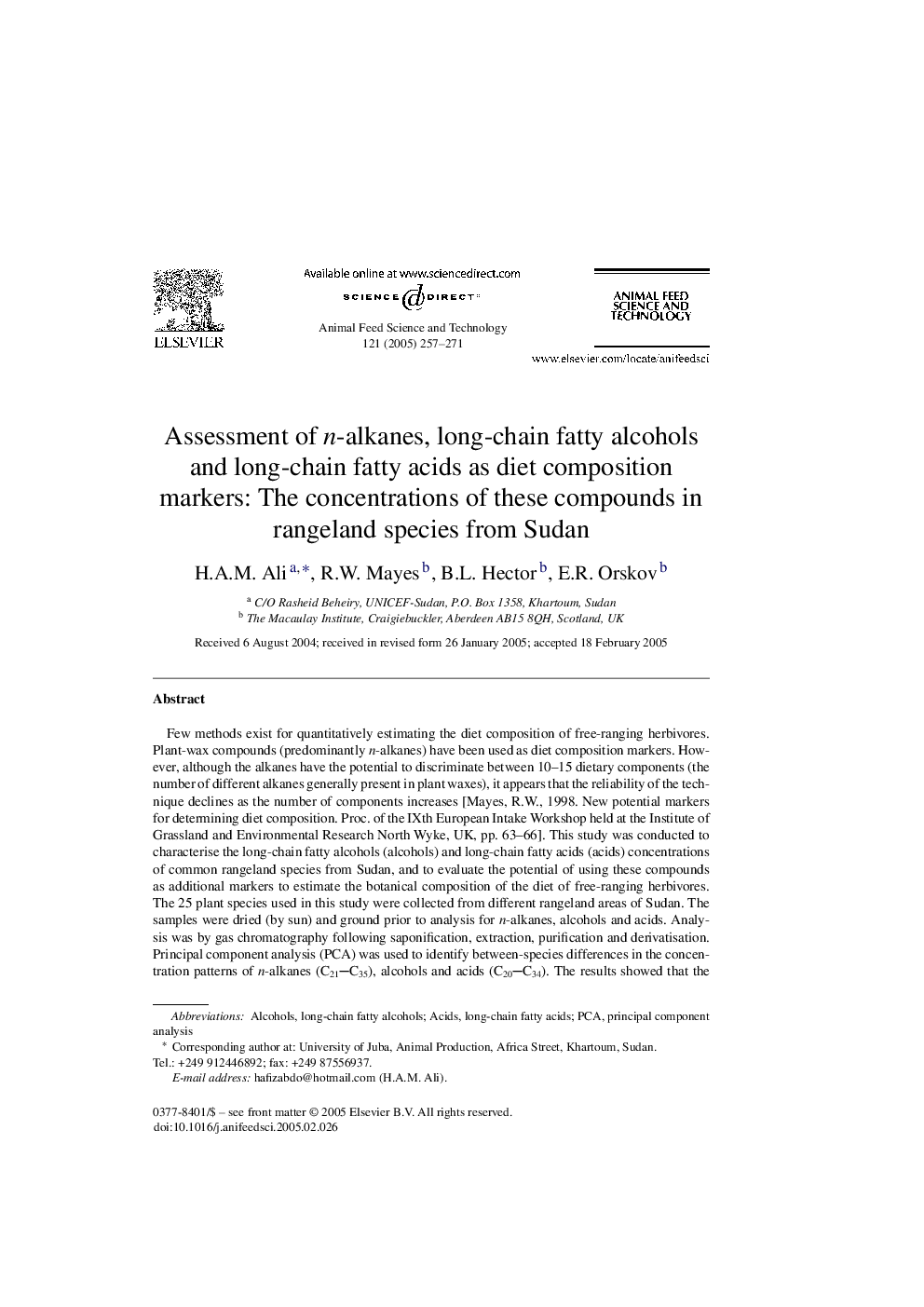| کد مقاله | کد نشریه | سال انتشار | مقاله انگلیسی | نسخه تمام متن |
|---|---|---|---|---|
| 8973732 | 1552510 | 2005 | 15 صفحه PDF | دانلود رایگان |
عنوان انگلیسی مقاله ISI
Assessment of n-alkanes, long-chain fatty alcohols and long-chain fatty acids as diet composition markers: The concentrations of these compounds in rangeland species from Sudan
دانلود مقاله + سفارش ترجمه
دانلود مقاله ISI انگلیسی
رایگان برای ایرانیان
کلمات کلیدی
موضوعات مرتبط
علوم زیستی و بیوفناوری
علوم کشاورزی و بیولوژیک
علوم دامی و جانورشناسی
پیش نمایش صفحه اول مقاله

چکیده انگلیسی
Few methods exist for quantitatively estimating the diet composition of free-ranging herbivores. Plant-wax compounds (predominantly n-alkanes) have been used as diet composition markers. However, although the alkanes have the potential to discriminate between 10-15 dietary components (the number of different alkanes generally present in plant waxes), it appears that the reliability of the technique declines as the number of components increases [Mayes, R.W., 1998. New potential markers for determining diet composition. Proc. of the IXth European Intake Workshop held at the Institute of Grassland and Environmental Research North Wyke, UK, pp. 63-66]. This study was conducted to characterise the long-chain fatty alcohols (alcohols) and long-chain fatty acids (acids) concentrations of common rangeland species from Sudan, and to evaluate the potential of using these compounds as additional markers to estimate the botanical composition of the diet of free-ranging herbivores. The 25 plant species used in this study were collected from different rangeland areas of Sudan. The samples were dried (by sun) and ground prior to analysis for n-alkanes, alcohols and acids. Analysis was by gas chromatography following saponification, extraction, purification and derivatisation. Principal component analysis (PCA) was used to identify between-species differences in the concentration patterns of n-alkanes (C21C35), alcohols and acids (C20C34). The results showed that the pattern of concentrations of n-alkanes, alcohols and acids differs greatly between different species, but suggest differences within-species were very small. Species with similar n-alkane concentration patterns had different alcohols or acid patterns, which suggests that combining any of theses markers with n-alkanes is likely to improve resultant diet composition estimates. It was concluded that the differences in the patterns of concentrations of alcohols and acids would render them suitable as markers for estimation of the botanical composition of the diet of free-ranging herbivores.
ناشر
Database: Elsevier - ScienceDirect (ساینس دایرکت)
Journal: Animal Feed Science and Technology - Volume 121, Issues 3â4, 24 June 2005, Pages 257-271
Journal: Animal Feed Science and Technology - Volume 121, Issues 3â4, 24 June 2005, Pages 257-271
نویسندگان
H.A.M. Ali, R.W. Mayes, B.L. Hector, E.R. Orskov,